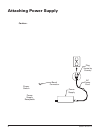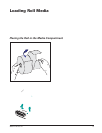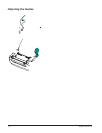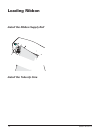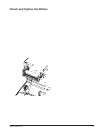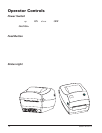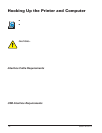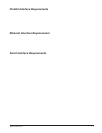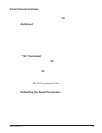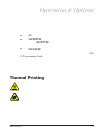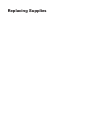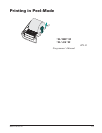
Hooking Up the Printer and Computer
Your printer will have one of two combinations of interfaces:
■
Universal Serial Bus (USB), parallel and serial
■
USB, ethernet, and serial
Each specific interface option—USB, parallel, ethernet, serial—is discussed
individually.
You must supply the required interface cable for your application.
CAUTIONS • Keep the power switch in the OFF position when attaching the
interface cable.
The power supply barrel connector must be inserted into the power supply
receptacle on the back of the printer before connecting or disconnecting the
communications cables.
This printer complies with FCC “Rules and Regulations,” Part 15, for Class B
Equipment, using fully shielded six-foot data cables. Use of longer cables or
unshielded cables may increase radiated emissions above the Class B limits.
Interface Cable Requirements
Data cables must be of fully shielded construction and fitted with metal or
metalized connector shells. Shielded cables and connectors are required to
prevent radiation and reception of electrical noise.
To minimize electrical noise pickup in the cable:
Keep data cables as short as possible (6’ [1.83 m] recommended).
Do not tightly bundle the data cables with power cords.
Do not tie the data cables to power wire conduits.
USB Interface Requirements
Universal Serial Bus (version 1.1) provides a high-speed interface that is
compatible with your existing PC hardware. USB’s “plug and play” design
makes installation easy. Multiple printers can share a single USB port/hub.
16 980476-001A
MOVIE



